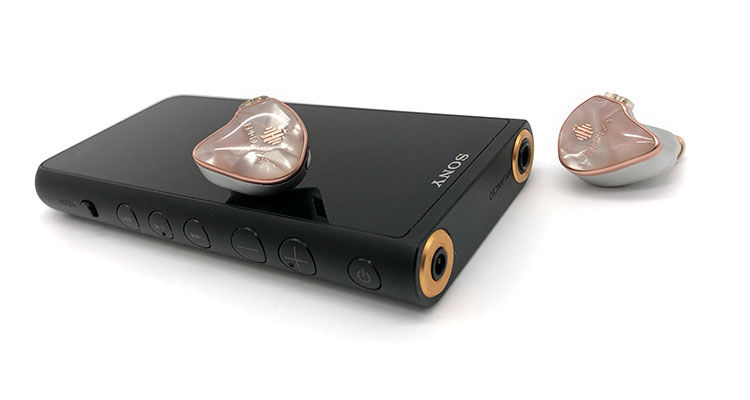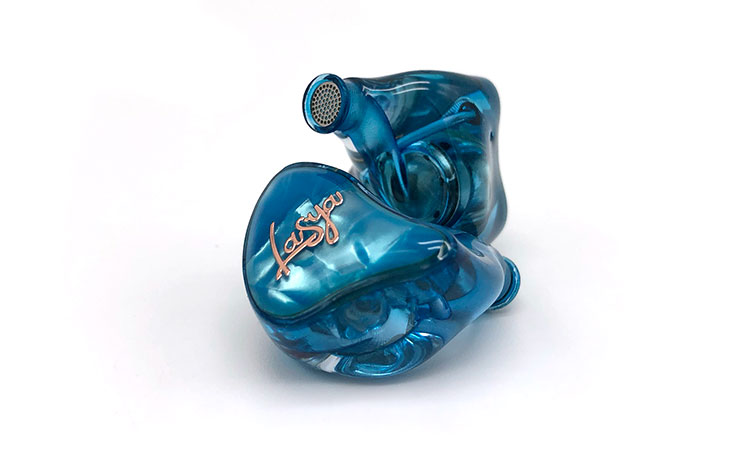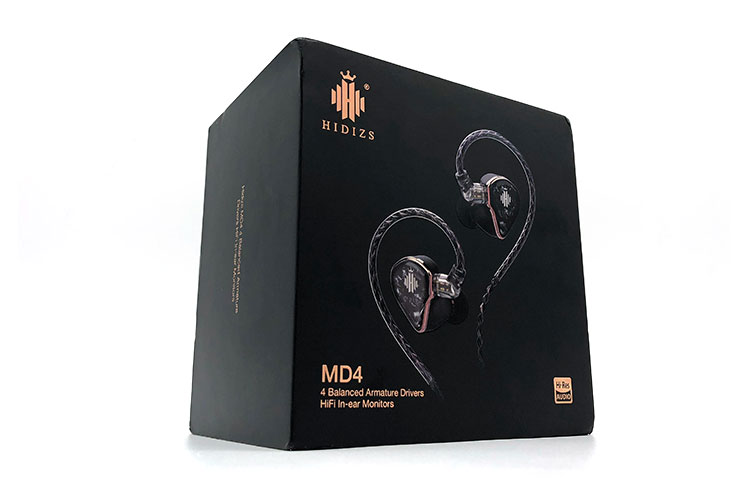Synergy
Efficiency
Beefy DAPs and amplifiers won’t break a sweat with the low 8W impedance of the MD4. Even using only an iPhone dongle, I’m only pushing the volume up to the 20% mark and even less for louder mixed tracks.
Proving its efficiency with a proper DAP, the MD4 only needed 38 notches from the Sony NW-ZX507 to be enjoyable, wherein my recently reviewed HiBy Lasya needed a little more oomph and landed at 45.
Using the MD4 in a full-size desktop DAC/Amp is also possible. Topping’s new DX5 DAC/Amp combo played well with the MD4 right around the -55dB mark.
Pairings
Even though I spent a couple of minutes listening to the MD4 using the Apple dongle, the resolution was getting bottlenecked especially around the vocal region so I brought the DX5 out of its box for most of the listening impressions.
If the DX5 has a plain and trustworthy sound, the two DAPs I also played around with from time to time gave the MD4 improved life and showcased its strengths and some minor difficulties.
The iBasso DX150 noticeably lowered the presence of the mids having nudged the low-end frequency energy up a bit. This gave guitars a softer twang while the bass was given a more lush and deeper vibe.
For a warmer and bodied midrange, the NW-ZX507 did an excellent job of getting the vocal range to return to a more agreeable character while injecting its flavor. Bass isn’t bloated and is well-disposed in pulling details.
Select Comparisons
HiBy Lasya
$239
Technical
The Lasya trimmed down all excess features as it arrived with one sonic objective and stuck with it making the MD4 seem chock-full of things to uncover.
Using a 10mm carbon nanotube dynamic driver, the Lasya is firmly rooted in chasing a vocal-centric signature. In contrast, the MD4 went the balanced armature route and allowed up to four different types of tuning profiles.
Leaving a lasting impression however is the CIEM-styled outer shell of the Lasya giving comfort and isolation to users who want to experience custom-made IEMs in a mass production-ready shape. HiBy took time to process real-world 3D scans of ear canals and outer-ear structure for an optimized fit.
Design
Both share fine-looking face-plates with the brilliantly clear MD4 in white against the slightly subdued but popping blue on the Lasya.
However, where the MD4 uses a rose-gold layer before transitioning to the main shell body, the Lasya simply went with a straight-cut union to the high-quality transparent epoxy material HiBy used to form its contoured and custom-looking universal housing.
Performance
In exchange for the dynamic punch present in the Lasya, the MD4 is leaning more towards those who prefer bite and heft in their kick drums and bass guitars. But with a cleaner and evenly dispersed low-end personality, the Lasya is friendlier with more types of genres.
When going back and forth between these two monitors, the biggest and most obvious difference is in the midrange presence and timbre. Since the Lasya is geared towards vocal enjoyment in opposition to the warmer take of the MD4, it dials down the weight and pursues a lush, vibrant, and more natural tonality.
If there’s anything to be discerned with Lasya’s vocal region is the presence of an uptick of presence in the upper midrange which gives brighter singers a shouty attack.
The MD4 is more held back in top-end frequencies and tapping of cymbals isn’t quite as accurate. This puts the cherry on top for Lasya as it has a more refreshing and truthful personality if only at the cost of a smaller soundstage.
Hidizs Mermaid MM2
$79
Technical
Like the MD4, two main ingredients are making the MM2 interesting, namely driver choice and tuning flexibility.
While the MD4 joined the balanced armature count race with its four drivers, the MM2 kept with the signature 10.2mm dynamic driver of Hidizs working in tandem with a 6mm magnetostatic balanced membrane for the higher frequencies.
The MM2 features screw-on output filters to alternate between three preferences of sound. The filters cut directly on the face of the IEM is a more dramatic approach than the toggle switches used in the MD4.
Design
Immediately different in presence, the more angular and matted finished face plate of the MM2 reflects light very subtly with a blatant interruption right in the middle with those removable filters.
The MD4 on the other hand uses the central area as space to place the logo in gold further cheering up the canvas.
With no need to swap filters the way the MM2 does, the switches for changing the tuning profile of the MD4 are located up top where it can be hidden from view once wearing the IEM.
Performance
Compared with the MM2, the punch of the MD4 is more impactful but less realistic. Other than this, the MD4 performed well in detail retrieval with synth and slow bass effects whereas the MM2 appears slower and less refined.
Fuller and more forward than the MM2, the MD4 has more definition when listening to breathy and rough vocals, while the MM2 catches up only to sound grainier when compared. Guitar edges and twangs are also more delineated with the MD4, with the upper-midrange softer on the MM2.
The MM2 is immediately quieter on the higher frequencies but in difference to the MD4 in sound, it has a more natural render on percussion and wind instruments.
So, while the MD4 takes the cake in terms of resolution, the MM2 gave steel drums a more accurate representation of the space resonating within.
TinHifi T2 Plus
$59.99
Technical
A third of the cost when considering buying the T2 Plus, what users get aside from it being identified with the original T2, is refinement in sound sharing tuning techniques with the P1 and T4.
And with an appreciation for simplicity, the T2 Plus is using a single 10mm NanoPure Nickel-Zinc alloy dynamic driver with no tuning filters or switches for a defined identity.
While more budget-oriented and with no additional drivers aimed to extend either end of the spectrum, the T2 Plus still delivers a respectable frequency range of 10Hz-20kHz.
Design
Using the T2 Plus in an air-conditioned room will probably surprise unwary users given the chill of the aircraft-grade aluminum alloy which gets quite cold to the touch. The MD4’s housing is similarly frosty feeling in such an environment especially since it has more surface contact with the ear.
And unlike the more premium visage of the MD4, the T2 Plus continues its simplistic approach even with looks. With a smooth and generic overall shape, the T2 Plus won’t get as many compliments compared to the gold-in-white fascia of the MD4.
Performance
Even though the T2 Plus has a dynamic driver, its low-end response is just not tight enough to forego the lack of natural punch on the MD4. Bass guitars aren’t as chiseled and tight compared to the MD4, and in some cases blurring images to appear 2-dimensional.
Guitars are duly translated to include trailing notes with the MD4, while it sounds leaner and more cut-off in the T2 Plus. With female vocals, it’s a difference of preference as the T2 Plus leans more towards honesty and cohesive timbre.
The T2 Plus may not layer as easily but with a taller and wider soundstage, instrument size and placement are given more emphasis. Dynamic sounds such as horns aren’t as roomy although violins sounded more natural.
Our Verdict
The Hidizs MD4 is a solid piece of gear with only a few quirks. This is an impressively resolving IEM that will not break the bank and one that provides plenty of flexibility with those four different tuning profiles.
While I hope that my experience is a one-time oversight during assembly, setting the tuning switches need to be double-checked at least once just to ensure everything is balanced. Tip rolling is also suggested to achieve maximum comfort since the default balanced tips are quite stiff.
Each of the four sound modes is quite enjoyable and should offer something for different listening moods and music genres. The only minor criticism is the nasal twist in timbre on certain songs but not a deal-breaker for an otherwise pleasing IEM at this price point.
Hidizs MD4 Technical Specifications
- Driver: 4 custom balanced armature drivers
- Frequency response: 20Hz-40kHz
- Crossover: 3 ways
- Sensitivity of balanced version: 102dB
- Impedance: 8W@1kHz
- Rated power: 3mW
- Weight (a pair): Approx. 14±3g (excluding earphone cable)







